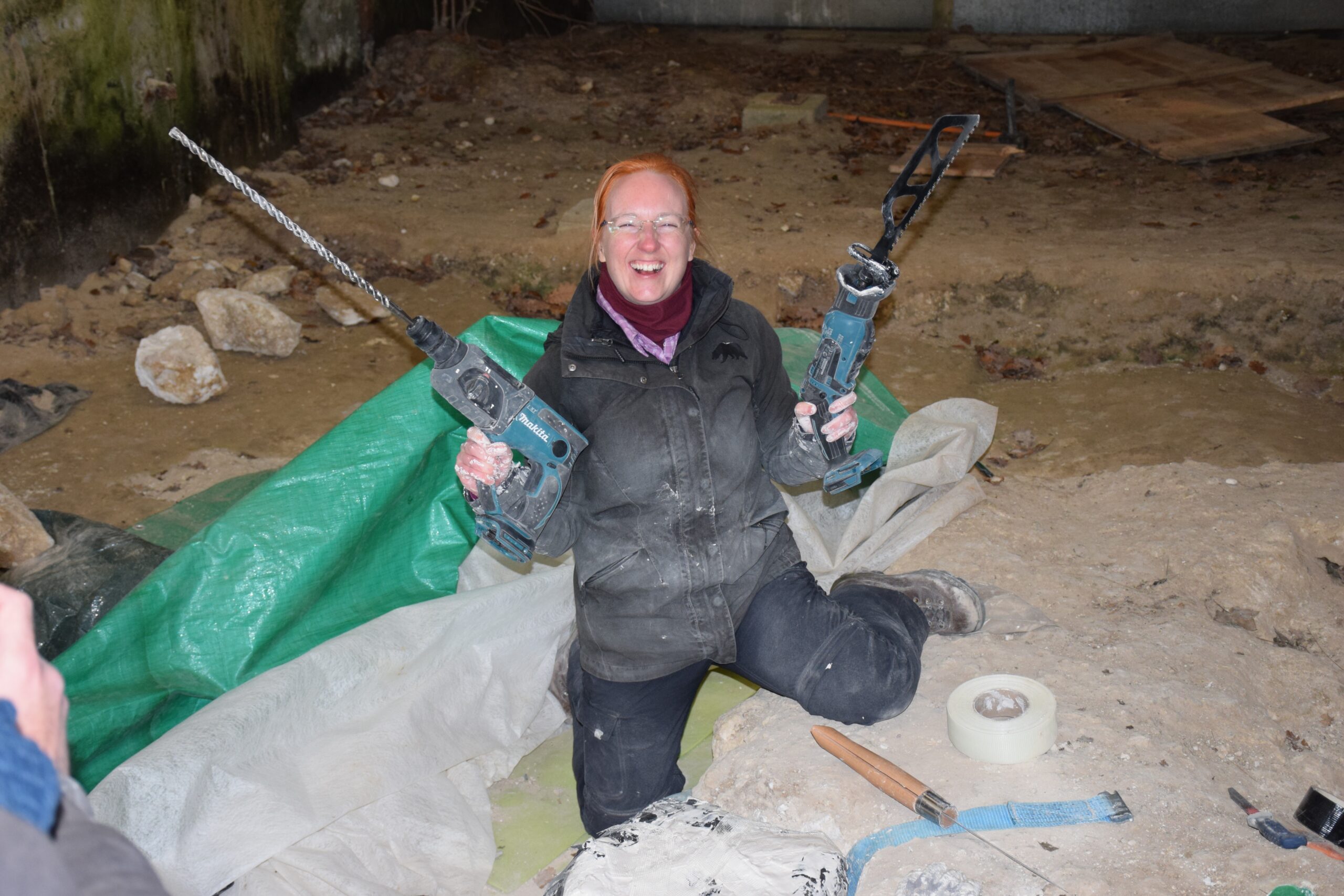Elaine Sellwood, geologist, seeks to determine the period of occupation of an archaeological site using luminescence dating

Dr. Elaine Sellwood is a geologist interested in the adaptations of human societies to a rapidly changing environment by studying an archaeological site using luminescence dating. She began her FACT project in November 2023 at the University of Rennes in the Geosciences Rennes laboratory.
[BIENVENUE Team]: Hello Elaine, what is your background?
I started studying geology in college and absolutely fell in love with the subject. Getting to look at cool landscapes and beautiful minerals and then figuring out where they came from was just really interesting to me. And of course, getting to go outside on field trips was just the cherry on top. So, after this introduction I studied a BSc in geology at the University of Leicester. Later I went on to study environmental sciences at Wageningen University in the Netherlands, which is where I attended a course on dating methods used in natural sciences. This introduced me to the method of luminescence dating for sediments and rocks. I completed my master thesis attempting to use luminescence dating of basalt samples (didn’t work, just in case you’re interested) alongside measurements of palaeomagnetism. I was then invited to Denmark by my thesis supervisor where I worked on another amazing project, trying to develop luminescence methods to determine when a glacier melted away from an alpine valley. Then I completed a PhD where I was developing a new instrument for imaging luminescence from rocks and worked on a relatively novel method of dating the exposure and burial ages of rocks and rock surfaces.
[BIENVENUE Team]: Why did you choose to do scientific research?
Apart from finding geology and the history of the Earth incredibly fascinating, I realised during my MSc thesis that research was exactly the type of education I didn’t know I had been looking for. Being a part of a project with other passionate people, being able to discover and answer my own questions, learn about new topics and use new types of instruments and tools, and generally learn in a more hands-on way was just incredibly motivating and enjoyable.
[BIENVENUE Team]: What is your project FACT about?
I am working on a site in south-west France near the small town of Jonzac which is an old quarry site. The sedimentary layers here are jam-packed with animal bones and a specific type of stone tool from the Quina Mousterian industry (~60-70 BP in SW France) which are associated with Neanderthals. This site is argued to be a Neanderthal butcher site and marks a point in time where climate fluctuations were forcing Neanderthals towards more seasonal hunting in open environments, instead of opportunistic hunting in temperate forests. I am going to try to use high-resolution luminescence dating of a section of this site to try and temporally constrain when this site was actually occupied. I will also be using my data sets to test and help develop a Bayesian statistics package which has been designed for analysing luminescence ages, to help minimise age uncertainties.
[BIENVENUE Team]: Why did you choose to implement your project in the Geosciences Rennes laboratory?
I came to be at the University of Rennes as during my PhD, I fortunately met a researcher (Guillaume Guérin) who was setting up his own luminescence lab (RenDaL) here in Rennes. He was/is working on a larger ERC-funded project called the Quina World project whereby different sites around France and Spain have been found with stone tools from the Quina industry are being investigated. The more he told me about the project the more interested I became, and after spending some time in industry after my PhD, I realised how much I missed research. So together we decided to apply for funding to see if I could come and work on the project, and here we are! I was fortunate to receive funding and now to have access to a brand-new luminescence lab where I can contribute to a fascinating project.
Thank you Elaine!
Elaine is sharing her progress with the sample collection and initial processing stages: check it out on YouTube!
